5 February 1818: Busy Times, Busy Thoughts
Covent Garden (theatre), London
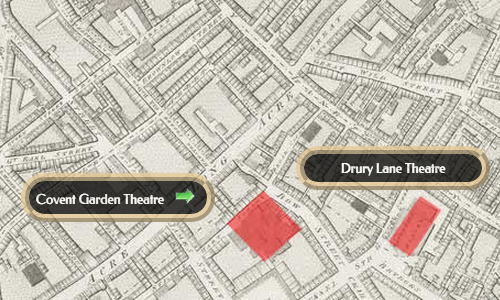
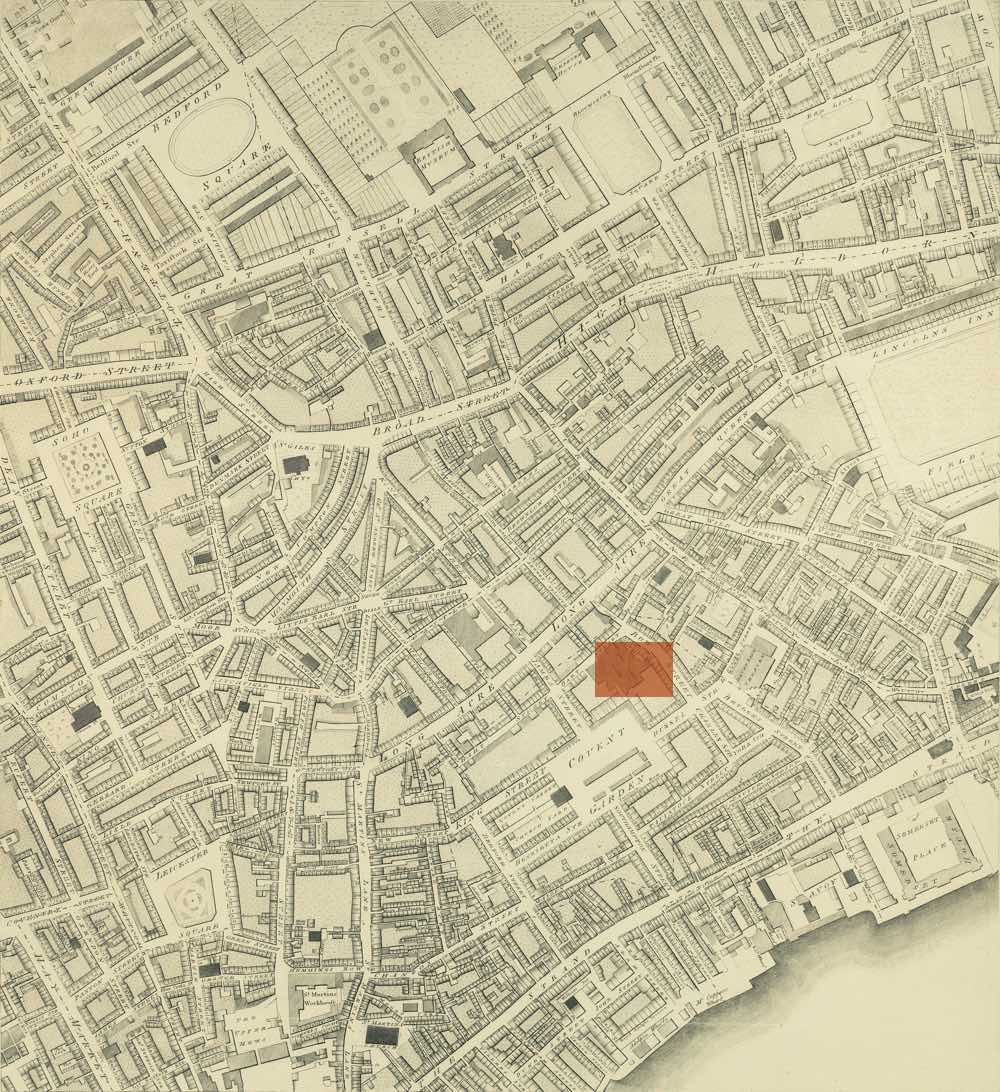
Keats watches H. H. Milman’s Fazio
(first staged as The Italian Wife in December 1816) at Covent
Garden—a tragedy mainly about the fall of Italy, with some guilt and jealousy thrown
over the
subject. Keats writes that the play hung rather heavily on me
(14 Feb).
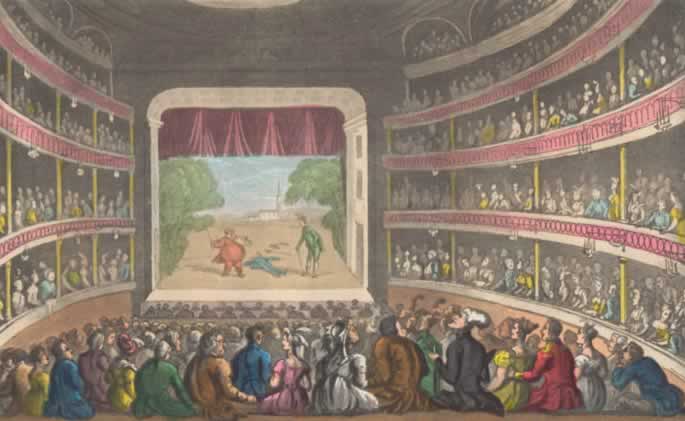
Once more, and much like the month before, this is a busy time for Keats: besides
working
hard to prepare his long poem Endymion for publication, the day
before he is at Leigh Hunt’s with the free-thinking
young poet Percy Shelley, writing sonnets on the
Nile as friendly competition;* the night before that he attends one of William Hazlitt’s influential lectures on English poetry (the
fourth in the series; he attends two more on the 10th, and 17th); on the 11th he once
more
dines at Hunt’s, with Shelley and his wife, Mary
(to-be novelist, author of Frankenstein) present, as well as
Thomas Love Peacock (poet, critic, and
novelist), Claire (Jane) Clairmont (daughter
of William Godwin’s second wife, stepsister to
Mary Shelley, pregnant by Lord Byron), and Thomas Jefferson Hogg (minor novelist). This is quite a
lineup for the young Keats on just one casual night. In a way, the evening of the
11th even
rivals the immortal dinner
of 28 December 1817, so-called by Keats’s friend, the
historical painter Benjamin Robert Haydon, after
he gathers Keats, William Wordsworth, Charles Lamb, and a few others to view his large canvas
which includes some of them.
Sometimes the popular imagination constructs Keats (and the Romantic poet in general)
as a
self-secluded, lonely, embowered figure. Keats is anything but, and neither are most
of his
canonical peers: they generally become great writers by reading, studying, writing
about, and,
crucially, meeting with other writers and thinkers. It turns out an intellectual network
is
more important than living the life of a solipsistic, solitary, wandering, leaf-loving
figure,
though the Romantic poet nonetheless often portrays this posture. Byron wonderfully mocks this Romantic stereotype in Canto 1, stanzas
90-91, of Don Juan, where poets, like Wordsworth, thinking unutterable things,
wander by
brooks and, with a mighty heart,
throw themselves within the leafy nooks
in
order to commune with their high soul
; the result is unintelligible
poetry.
Tomorrow, the 6th, Keats sends Book II of Endymion to his publishers. Book I is delivered 20 January, though he adds what he feels are crucial lines about a week later (Book I, lines 777-81), which introduce the pleasure thermometer passage (see letter, 30 January). By the end of the month, Keats does some of the proofs for Endymion, which is officially published toward the end of March. He will be greatly relieved to have his large, traipsing poem behind him in order to pursue other, quite different directions.
But at this time in his thinking about poetry, Keats finds himself turning away from
how
vanity, egotism, and pedantry have crept into contemporary poetry. For Keats, this
marks some
kind of exploration of how a capable imagination can patiently open itself to both
sorrow and
joy. Thus on 19 February he writes, let us open our leaves like a flower and be passive and
receptive.
This fits into his larger theory of how the true poetic character (itself
beautiful, like a flower) embraces its subjects without fractious reasoning or reaching.
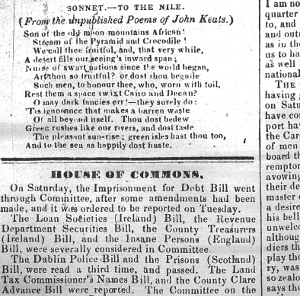
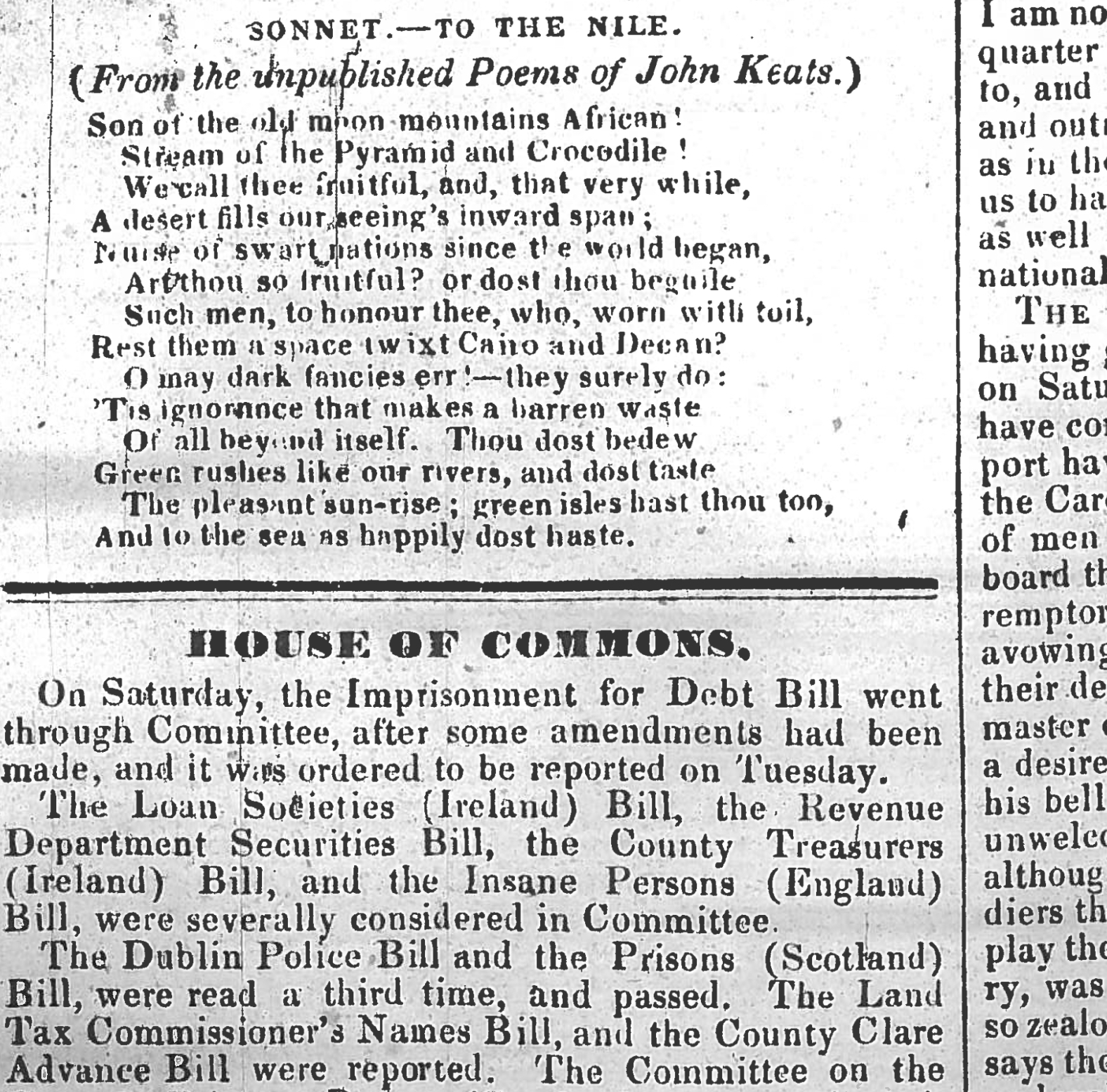
*Keats’s contribution to the fifteen-minute sonnet-writing competition on 4 February
is To the Nile. It remained
unpublished until 1838. Shelley and Keats were apparently finished within the time
limit,
while Hunt remained working on his into (as they say) the wee hours. Keats’s sonnet
is pretty
bad, which is to expected: taking a vaguely allegorical tact, it addresses the Nile
as
Chief of […] the Crocodile,
and goes on to say that the river dost bedew / Green
rushes.
Shelley’s resulting sonnet is equally indifferent, and plays with the idea the
Nile as both good and bad. Hunt’s effort is a little better—but that may have been
because he
actually tried.

